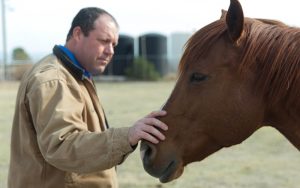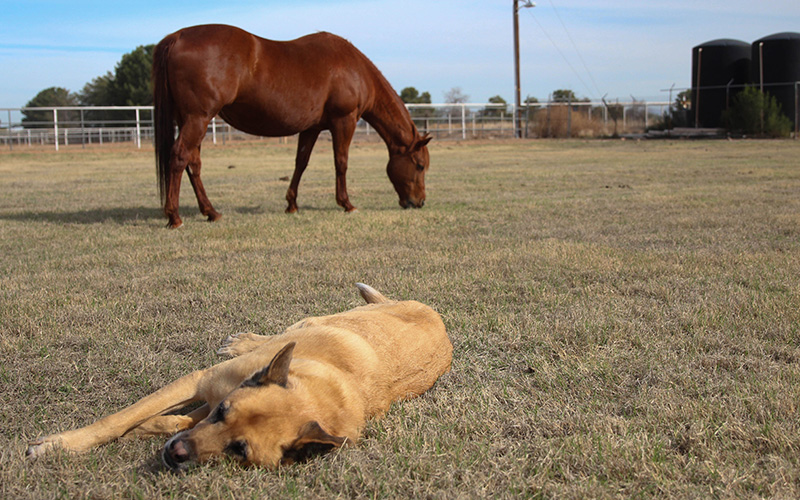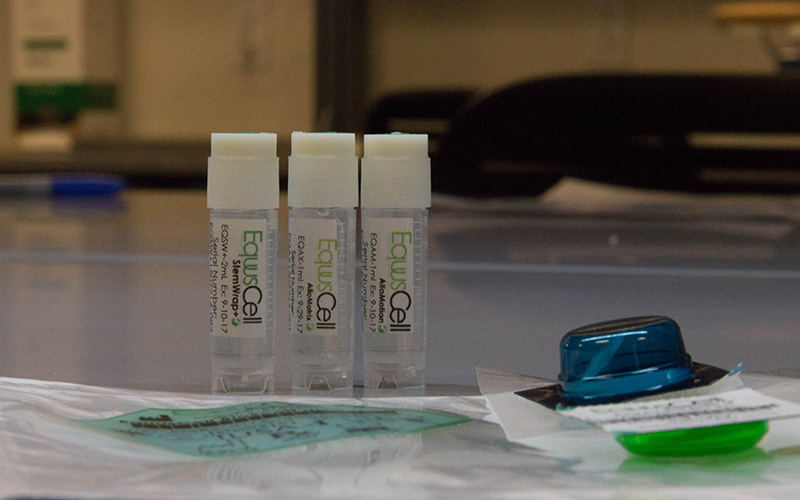MESA – A horse prances around an open field in the East Valley, ready to give birth. But Cheyenne and her foal have a larger role to play in equine medicine: The birth will provide regenerative materials and stem cells that could help other animals recover from injuries.
AniCell Biotech, a Chandler-based startup, collects the amniotic materials during birth and uses them in a new regenerative treatment for tendons, ligaments, eyes and wounds in dogs and horses.
Related video:
AniCell Biotech owns a ranch in Mesa where horse owners take their pregnant mares. After birth, the company takes the materials back to its lab in Chandler where Dr. Moises Barcello separates the live cells from the dead cells. He takes the cells and spins them in a mass spectrometer until they create a liquid he can use for the medicine.
AniCell creates treatments that include shots, bandages, eye implants and eye drops.
CEO Brandon Ames said he was inspired to start his company when his daughter had to put down her horse because of a drug altercation. He knew he needed to assemble a team to discover better treatments.
“I knew of this technology (and) had been introduced to this technology, and it was just one of those things that just continued to come back time and time again,” he said. “And finally, I decided that it should be in the animal world as well.”
Ames said his products are not only changing the horses’ lives, but the lives of their owners as well. When a horse gets an injury, it can be extremely invasive and expensive.
Ames tells a story about a horse named Elmo. Elmo developed an ulcer in his eye. For most horses, the diagnosis meant blindness. Ames remembers the little girl who owned the horse saying, “Well if Elmo can’t see, I just won’t have a horse at all.”
Ames and AniCell created a contact for Elmo’s eye, and six weeks after removing the ulcer, he got his eyesight back.

Brandon Ames cares for two horses on his ranch in Chandler. Their amniotic fluids will be used at Anicell Biotech. (Photo by Erica Apodaca/Cronkite News)
In Cave Creek, Dr. Wade Walker works as an equine surgeon with the Chaparral Veterinary Medical Center. He said he has never used amniotic stem cell treatments to save horses, but he has used bone marrow stem cell treatment.
“Definitely the most researched and used in this hospital is bone marrow stem cells,” he said. “Bone marrow derived (treatments) have very little flammatory mediators so that’s a benefit of that.”
While there is far less research and clinical application for treatments that use amniotic materials, Walker said these kinds of treatment are the future of equine medicine.
“The future of stem cells will be off-the-shelf stem cells,” he said. “So we can determine a horse needs it, go into our pharmacy, take it off the shelf and inject.”
Walker estimated surgeons will know a lot more about how to use these treatments in the next 10 to 15 years.
The AniCell treatments can cost up to a few thousand dollars depending on the treatment, but most animal insurance plans will cover the costs, according to the company. Only registered veterinarians can purchase the treatments.
Vets across the country have used the AniCell treatments.

 Horse stem cell research bolsters veterinary care
Horse stem cell research bolsters veterinary care